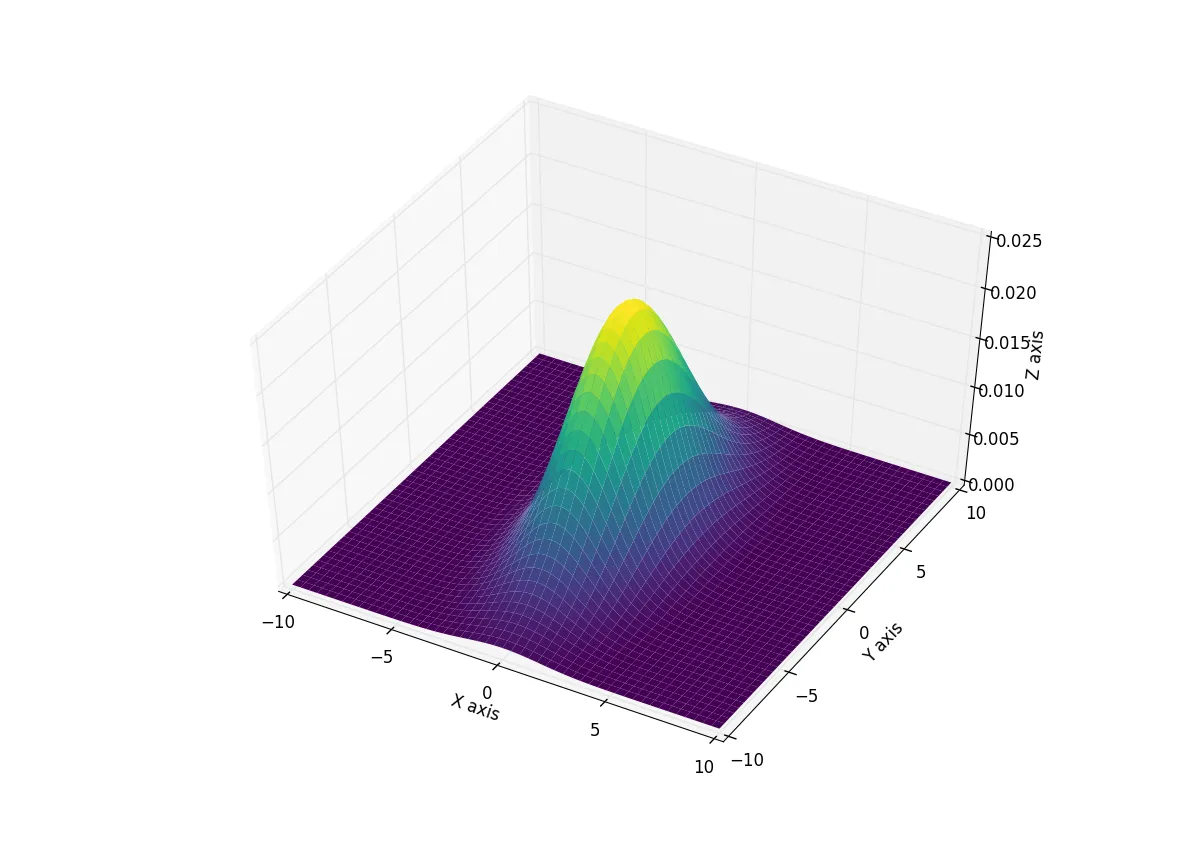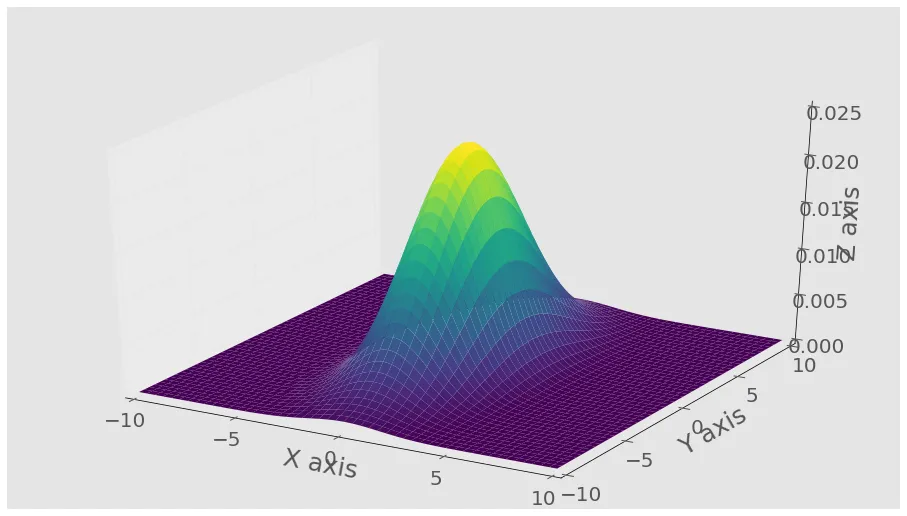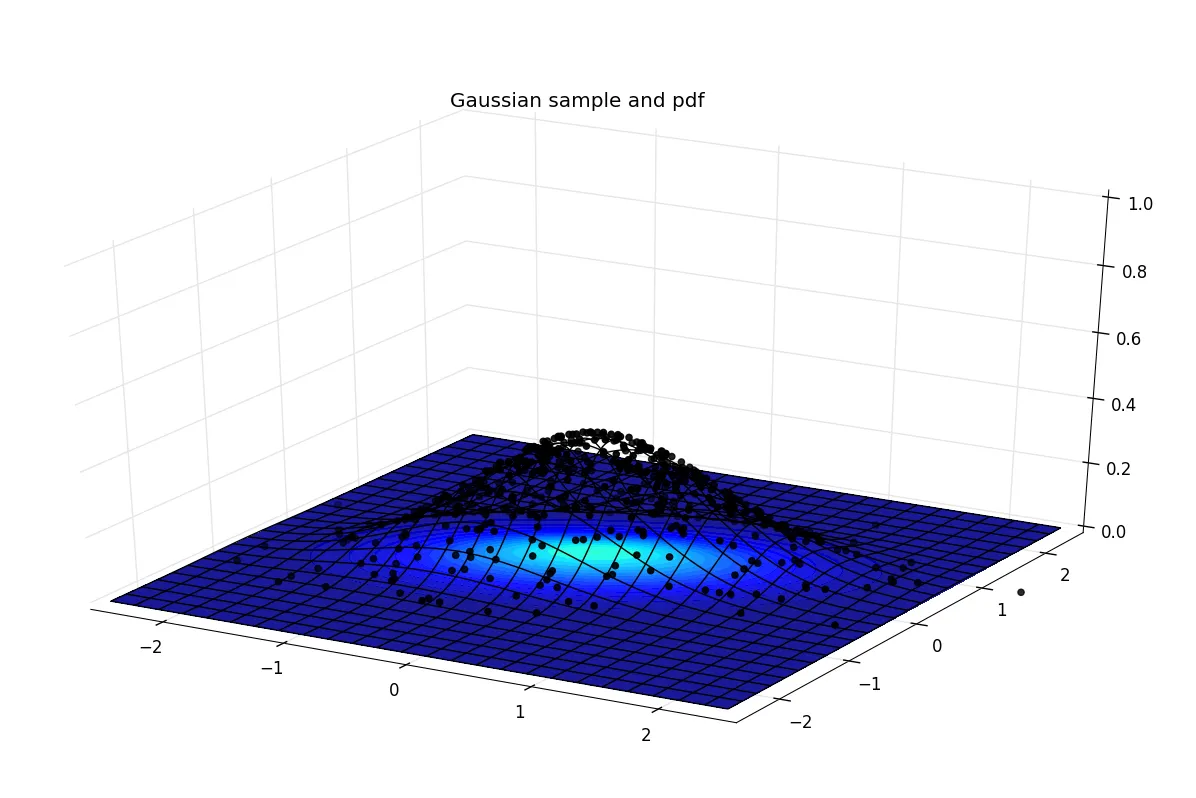听起来你需要的是多元正态分布。在scipy中,它被实现为scipy.stats.multivariate_normal。请记住,你需要向函数传递一个协方差矩阵。因此,为了保持简单,将非对角线元素设为零:
[X variance , 0 ]
[ 0 ,Y Variance]
以下是使用此函数生成结果分布的三维图形示例。我添加了颜色映射以使曲线更易于观察,但可以随意删除它。
import numpy as np
import matplotlib.pyplot as plt
from scipy.stats import multivariate_normal
from mpl_toolkits.mplot3d import Axes3D
mu_x = 0
variance_x = 3
mu_y = 0
variance_y = 15
x = np.linspace(-10,10,500)
y = np.linspace(-10,10,500)
X, Y = np.meshgrid(x,y)
pos = np.empty(X.shape + (2,))
pos[:, :, 0] = X; pos[:, :, 1] = Y
rv = multivariate_normal([mu_x, mu_y], [[variance_x, 0], [0, variance_y]])
fig = plt.figure()
ax = fig.gca(projection='3d')
ax.plot_surface(X, Y, rv.pdf(pos),cmap='viridis',linewidth=0)
ax.set_xlabel('X axis')
ax.set_ylabel('Y axis')
ax.set_zlabel('Z axis')
plt.show()
给您这个图:

编辑:下面的方法在Matplotlib v2.2中已被弃用,并在v3.1中删除
可通过matplotlib.mlab.bivariate_normal获得一个更简单的版本,
它接受以下参数,因此您不需要担心矩阵问题:
matplotlib.mlab.bivariate_normal(X, Y, sigmax=1.0, sigmay=1.0, mux=0.0, muy=0.0, sigmaxy=0.0)
这里X和Y再次是meshgrid的结果,因此可以使用它来重新创建上面的图:
import numpy as np
import matplotlib.pyplot as plt
from matplotlib.mlab import bivariate_normal
from mpl_toolkits.mplot3d import Axes3D
#Parameters to set
mu_x = 0
sigma_x = np.sqrt(3)
mu_y = 0
sigma_y = np.sqrt(15)
#Create grid and multivariate normal
x = np.linspace(-10,10,500)
y = np.linspace(-10,10,500)
X, Y = np.meshgrid(x,y)
Z = bivariate_normal(X,Y,sigma_x,sigma_y,mu_x,mu_y)
#Make a 3D plot
fig = plt.figure()
ax = fig.gca(projection='3d')
ax.plot_surface(X, Y, Z,cmap='viridis',linewidth=0)
ax.set_xlabel('X axis')
ax.set_ylabel('Y axis')
ax.set_zlabel('Z axis')
plt.show()
给予:



